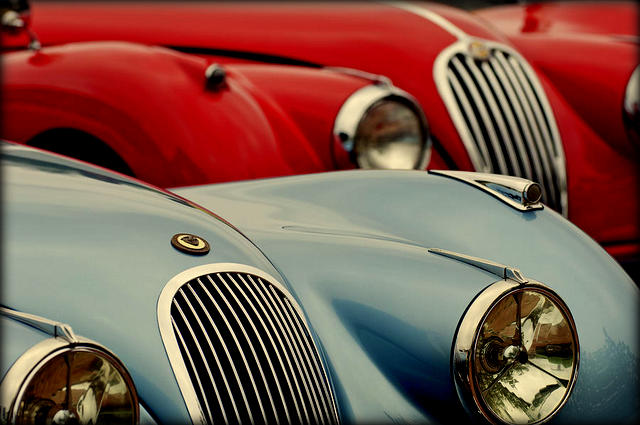Most Beautiful Cars: Jaguar XK120
Posted on Jan 20, 2021 in Antique | Comments Off on Most Beautiful Cars: Jaguar XK120
“The car is the closest thing we will ever create to something that is alive.” – Sir William Lyons
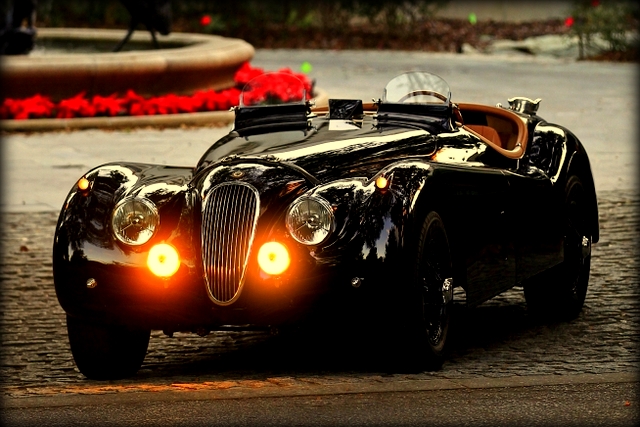
Very few cars are appreciated as classics in their own time. From the moment Jaguar unveiled the XK120 at the Earls Court Motor Show in 1948, the press and the public understood that it was a milestone. The XK120 was the fastest and the most beautiful car offered by any manufacturer at any price.

The XK120 was more about the engine than the body. Jaguar was a new company, having just one production car under its belt, the SS100. The company had just survived WWII, and had changed its name from SS Cars (for Swallow Sidecar) to Jaguar due to the connotations of the German SS.
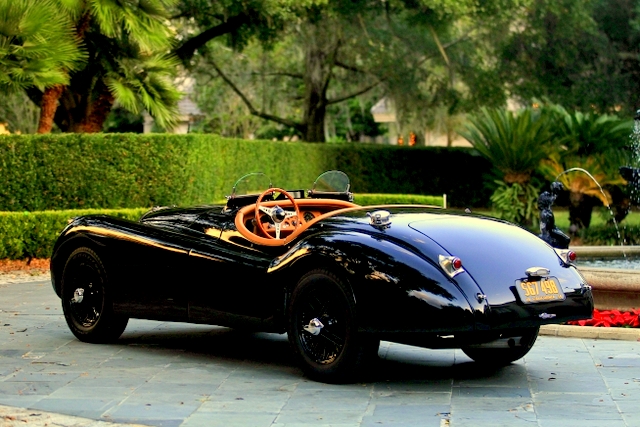
During the war the order was given by head Sir William Lyons to create an engine on their own, something they could use to power a new line of sedans the company was developing. Prior to this, they had purchased engines from outside suppliers, and the need to develop in-house was critical to the company’s future.

Jaguar and Sir William were intent on producing a sport saloon with 100mph performance with a price of less than 1,000 pounds. This was a very tall order at a time where the average car could barely crack 75mph, and just reaching 60 would take 30 seconds or more. Lyons also required the car to be fuel efficient, at a time when gas rationing was common.

Work began on a new engine, dubbed the XK. It was designed as a cross flow head, dual overhead cam layout with four cylinders, but was eventually upgraded to a six cylinder for better performance. The end result was a seven bearing straight six, displacing 3,442 cc (210 cu in.) with a long stroke that provided good low end torque and high RPM power cast with aluminum heads. This engine would continue to be used in Jaguar models straight through to the 1980’s.
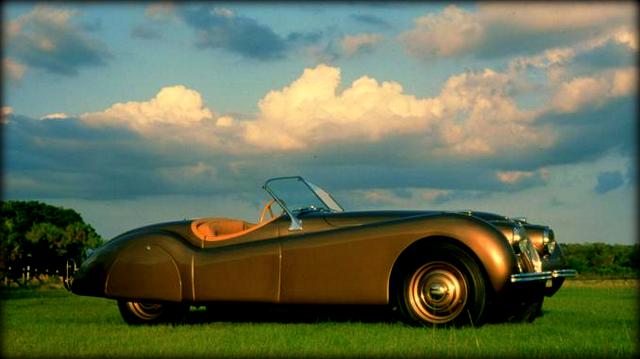
The new engine was to be mated to the new sport sedan, but Lyons decided it needed more “field experience” before large scale production. His solution was to develop a limited production sports car with an entirely new body. The design called for a wood and metal frame with hand formed aluminum body panels.
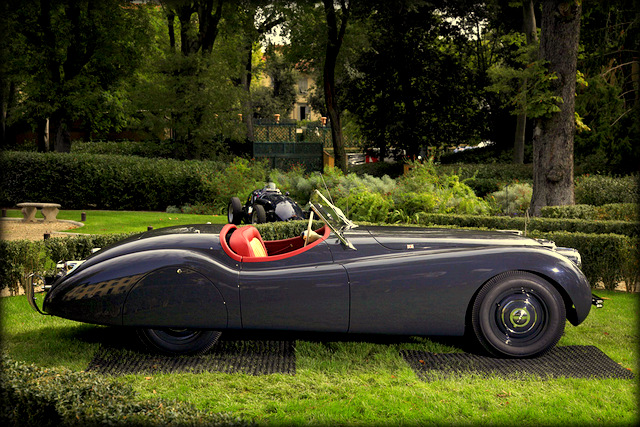
Based on the BMW 328 Mille Miglia, the car was to be a low slung sports roadster. Sir William himself, though not an engineer, had a heavy hand in the styling. Taking the shape of the BMW, Lyons made the form longer, lower and more curvaceous, with a dramatic beltline dip below the doors. Lyons would shape the car in the garden of his home and study how the light reflected off the curves, all while local children would watch from atop the garden walls. Lyons had a masterful understanding of light and curves, and the new sports car was a testament to his abilities as both an artist and designer.

The new design was named XK for the engine, and 120 for its top speed. It was basically the Bugatti Veyron of its day. On its debut, the car astounded the audience. It upstaged every other car at the show, including Jaguar’s own Mark V sedan. In fact, the other manufacturers were so put off, they were openly skeptical that Sir William could really offer such a car for such a low price.

The critics of the time were ecstatic, and so amazed at the 120mph top speed that they were willing to overlook its faults, one of which that anyone over 5’9” would not be able to fit comfortably behind the wheel, and the others being a sad excuse for brakes and a tragic Moss transmission. Jaguar performed many demonstrations of the cars speed, achieving 126mph and higher. At a time when only a V12 Ferrari could reach such speeds, the 1,000 pound XK120 was more than a bargain.
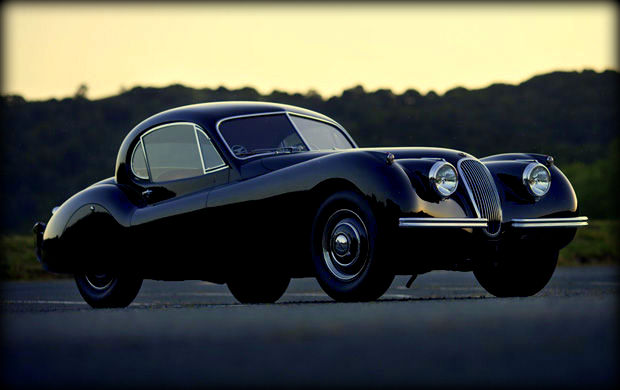
The reaction to the car was so great that Sir William was forced to increase production plans. Originally intended for 200 cars, the body was hastily redesigned for large scale production in steel. Much of the production (85%) was bound for the United States, going to upscale wealthy owners like Clark Gable and Humphrey Bogart. The popularity of the car, enhanced by a favorable exchange rate, eventually created a demand for a fixed head coupe (FHC) version in 1951. The coupe, with its sweeping circle of a roofline was dramatic, and included many more niceties required in a luxury car.
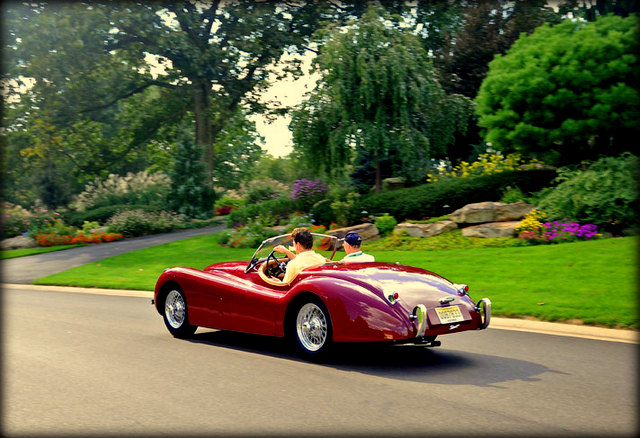
The XK120 eventually evolved into the XK140, which addressed some of the concerns with comfort and functionality. This eventually morphed into the XK150, which lost some of its stunning curves but improved performance. Finally the line was replaced by the equally stunning E-Type. Overall production numbers for the XK120 was 12,061 including 240 of the original roadsters, which was far more than the original 200 planned by Sir William Lyons.

The Jaguar XK120 remains one of the most beautiful cars of all time. The styling is still unique and instantly recognizable. It possessed the beauty of the classic pre-war European coach built era cars with the speed of the fastest race cars of the time. The XK120 was the epitome of grace…simple elegance and the refinement of movement.
